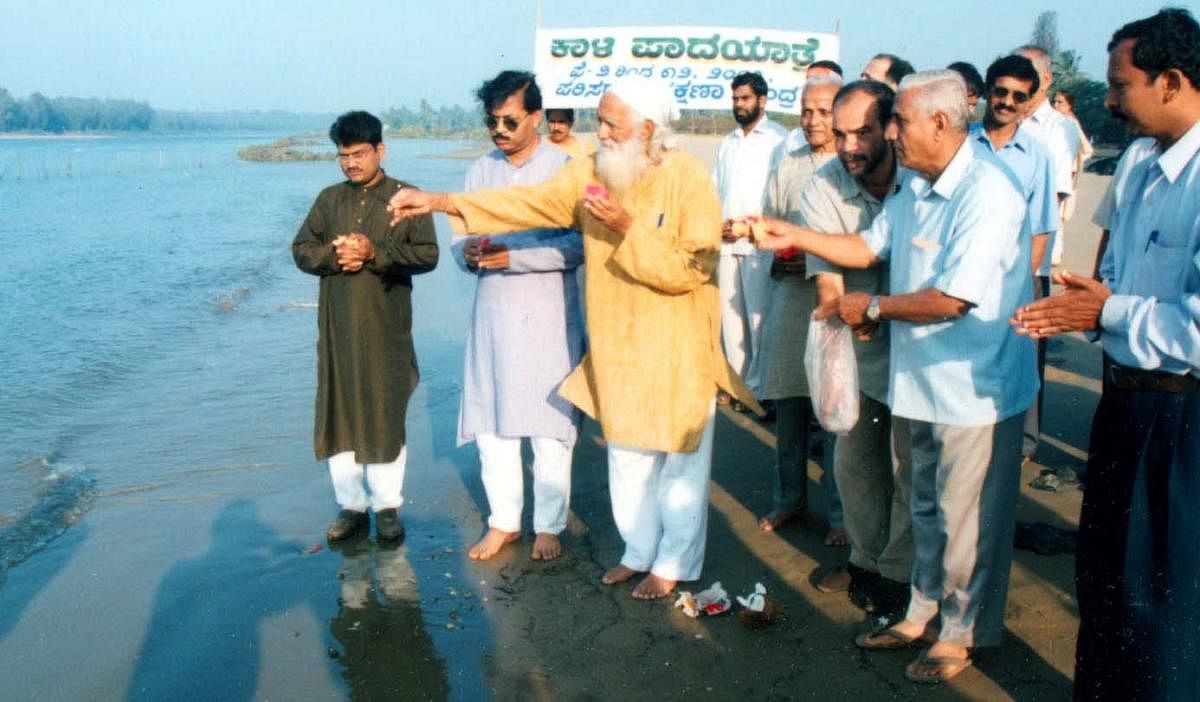
The year was 1982. The stage was set. Experts from across the country had descended on the small, sleepy town of Sirsi in Uttara Kannada district to attend the first-ever national seminar on the ecological impacts of large dams, which went on for four days. Through his inaugural speech criticising the Nehruvian development policy, the doyen of Kannada literature, K Shivaram Karanth, gave the much-needed impetus to the fledgling environmental movement in the state.
It was an unusual seminar because most of the audience were arecanut farmers who could hardly understand anything that was being debated in English. Their concerns, however, were vindicated as ecologists, economists and development experts put forth a cost-benefit analysis of the large dams in India.
Why was Sirsi chosen as the venue? Because there was already a fierce agitation on against a proposed big dam across the nearby Bedthi River, which would submerge vast tracts of rainforests along with arecanut plantations.
Beginning from the early 80s, there was also an environmental worldview that was slowly crystalising. As though on cue, a number of academicians like Madhav Gadgil, A K N Reddy, S R Hiremath, Vandana Shiva simultaneously provided scientific backing to the ecological movement. Shivaram Karanth translated tomes like the Brundtland Report (‘Our Common Future’) and the Citizens’ Report on the State of the Environment to Kannada, while Poornachandra Tejaswi wrote a series of books on forest and wildlife.
Beginning from the Bedthi and Appiko movements, the 80s were the most dynamic decade of public protests in Karnataka, with voices raised against the Bisgod and Kudremukh mines, Kaiga atomic power station and the Cogentrix and Barge mounted power projects.
A series of lawsuits were also filed against nuclear complexes, mining enterprises, hydel dams and afforestation projects.
Enter globalisation
In the 90s, another series of protests (the first in the country) against multinational corporations, targeting Kentucky Fried Chicken, Cargill Seeds, a Japanese township in Bidadi and international treaties like the General Agreement on Tariffs and Trade (GATT) and Agreement on Trade-Related Aspects of Intellectual Property Rights (TRIPS) were launched, culminating in the torching of the genetically modified crops.
The first phase of the movement was largely confined to the Western Ghats and the coastal region and was fuelled by scientists, literary icons, religious groups and the media. The second iteration was largely led by farmers, socialists, economists and cultural voices.
As India’s economy was liberalised, these social movements slowly tapered off. Though the momentum faded, not everything was lost. The Bedthi dam was shelved; Bisgod manganese mine was closed; the proposed Cogentirx power plant did not take off; forest officials decided against taking up eucalyptus monoculture plantations in revenue lands.
In Kudremukh, wildlife enthusiasts scored a victory when the Supreme Court ordered the winding up of iron ore mines. The proposed Japanese township and the thermal power plant at Chamalapur were shelved.
The credit for these achievements should be shared by scientists, sensible technocrats, politicians and policymakers as well. The establishment of the State Pollution Control Board also contributed to environmental awareness permeating the bureaucracy to some extent.
The forest department started projecting itself as the savior of the ecosystem, rather than being merely a revenue earning organisation. A bear sanctuary here (Daroji Sloth Bear Sanctuary in Ballari district), an otter sanctuary there (Tungabhadra Otter Reserve Sanctuary in Ballari), a bio reserve for lion-tailed macaques (in the Western Ghats) — all unique to Karnataka — were seen as an attempt to greenwash the image.
All said and done, the early impetus to conservation has not resulted in any major change in the government’s attitude towards development projects.
The Netravati River diversion project is on in full swing; a slew of railway and highway projects are proposed through the Western Ghats, despite fierce opposition by environmentalists and scientists.
In the 1980s and 90s, activists went to the villages to create awareness about environmental conservation. Today, conservation is not the urgent, existential issue it once was. All of us are trapped in an urban bubble, unwary of the warning nature sends us. Desperate, it may look for some other agents to warn us of our misdeeds. Let us hope it won’t be another breed of viruses.
(The writer is a senior journalist and author based in Bengaluru)
